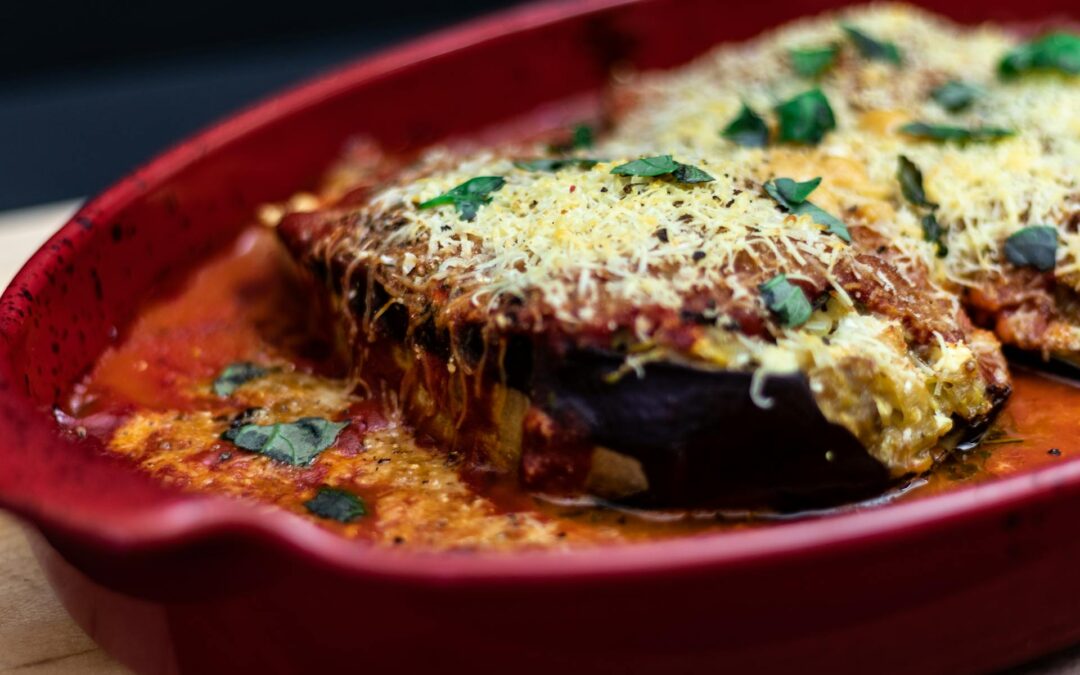Eating healthy doesn’t have to be complicated, especially when you embrace low-carb vegetarian meal plans. Whether you’re reducing carbs for weight management, balancing blood sugar, or simply exploring new ways to eat sustainably, this guide will help you create delicious, satisfying meals—all while staying meat-free.
Benefits of a Low-Carb Vegetarian Diet
The combination of a low-carb and vegetarian lifestyle offers a range of health, environmental, and practical benefits. This dietary approach allows individuals to enjoy nutrient-dense, plant-based meals while minimizing carbohydrate intake, making it an attractive option for weight management, better energy levels, and sustainability. Here’s a deeper dive into its specific benefits: (1)
Nutritional Advantages
Adopting a low-carb vegetarian diet is associated with multiple health perks: (2)
- Improved Blood Sugar Control:
Limiting high-glycemic carbs, such as refined grains and sugars, helps stabilize blood sugar levels. This can reduce the risk of type 2 diabetes or help manage it effectively. Incorporating low-carb vegetables like broccoli and spinach ensures steady glucose levels. - Heart Health:
Plant-based diets are already known to lower cholesterol levels. Combining this with a low-carb approach—featuring healthy fats from avocados, nuts, and seeds—can further enhance cardiovascular health. Studies have shown that reducing carbohydrate intake helps lower triglycerides and improve HDL cholesterol (the “good” cholesterol). - Anti-inflammatory Effects:
A diet rich in whole foods and healthy fats may help reduce inflammation linked to chronic conditions such as arthritis, obesity, and heart disease.
Enhanced Weight Management
Low-carb vegetarian diets can support weight loss or maintenance due to their unique approach:
- Reduced Cravings and Appetite:
High-protein, fiber-rich foods like tofu, lentils, and leafy greens promote feelings of fullness, helping curb overeating. - Promotes Fat Burning:
By reducing carb intake, the body shifts into a fat-burning state called ketosis, making it easier to shed excess weight. - Avoids Empty Calories:
Whole, unprocessed plant-based foods replace carb-heavy snacks, focusing instead on nutrient-dense options that fuel the body.
Environmental and Ethical Benefits
A low-carb vegetarian diet isn’t just beneficial for health—it also contributes positively to the planet:
- Lower Carbon Footprint:
Reducing reliance on meat significantly decreases greenhouse gas emissions. Eating low-carb staples like zucchini, eggplant, and cauliflower rice is an environmentally friendly alternative. - Ethical Eating:
Many people choose vegetarian diets for ethical reasons, such as avoiding animal harm. Combining this with a low-carb approach ensures they can meet their goals without resorting to unsustainable or unethical food practices.
Improved Energy Levels and Cognitive Function
This diet provides sustained energy throughout the day by stabilizing blood sugar and avoiding carb-induced energy crashes. Healthy fats from foods like chia seeds and coconut oil can also support brain health, improving focus and memory.
Diverse Food Choices
A common misconception is that low-carb vegetarian diets are restrictive, but this is far from true. With a focus on low-carb vegetables, healthy fats, and plant-based proteins, there’s room for culinary creativity. For example:
- Salads with tofu and avocado
- Zucchini noodles topped with pesto
- Cauliflower crust pizzas
Supports Gut Health
Fiber-rich, low-carb foods like leafy greens, broccoli, and chia seeds nourish gut bacteria, promoting digestive health. This, in turn, boosts immunity and enhances overall well-being.
Reduces Risk of Chronic Diseases
By cutting out refined carbs and sugars, the diet helps reduce the risk of chronic conditions such as:
- Heart disease
- Type 2 diabetes
- Metabolic syndrome
Challenges and How to Overcome Them
Switching to a low-carb vegetarian diet can offer incredible health benefits, but it comes with its share of hurdles. Whether you’re concerned about meeting nutritional needs or keeping meals exciting, these challenges can be addressed with the right strategies and a bit of planning. Here’s a breakdown of common obstacles and actionable ways to overcome them.
Meeting Protein Requirements
One of the biggest concerns with a vegetarian diet is achieving adequate protein intake, especially when also limiting carbs. Common protein-rich vegetarian options like legumes and grains often contain higher carb levels, posing a challenge. (4)
How to Overcome This Challenge:
- Incorporate Plant-Based Protein Sources:
Opt for low-carb, protein-rich foods such as:- Tofu and tempeh: High in protein and versatile in recipes.
- Seitan: A wheat-based protein with minimal carbs.
- Greek yogurt and eggs: Excellent for lacto-vegetarians.
- Add Protein Powders:
Use plant-based protein powders made from peas, hemp, or rice in smoothies and snacks. - Combine Complementary Proteins:
Pairing foods like nuts and seeds or leafy greens and dairy ensures a complete amino acid profile.
Avoiding Hidden Carbs in Vegetarian Foods
Many vegetarian staples, such as meat substitutes and packaged foods, are surprisingly high in carbs. This makes it challenging to stay within your carb limit.
How to Overcome This Challenge:
- Read Labels Carefully:
Check for added sugars or starches in products like veggie burgers or plant-based milk. Choose unsweetened versions whenever possible. - Focus on Whole Foods:
Stick to unprocessed options like fresh vegetables, nuts, and seeds for snacks and meals. - Track Your Carbs:
Use apps like MyFitnessPal or Carb Manager to monitor your intake and ensure hidden carbs don’t sneak in.
Managing Meal Variety
A low-carb vegetarian diet can feel restrictive if you don’t actively seek variety. Eating the same meals repeatedly can lead to boredom and diet fatigue.
How to Overcome This Challenge:
- Experiment with Different Cuisines:
Try recipes inspired by global flavors, such as:- Asian stir-fries with tofu and sesame oil
- Mediterranean zucchini noodles with olives and feta
- Plan Ahead:
Rotate ingredients like zucchini noodles, cauliflower rice, and portobello mushrooms to keep meals interesting. - Follow Recipe Blogs:
Look for low-carb vegetarian recipe blogs or cookbooks for inspiration. Many feature customizable meal ideas to suit your carb threshold.
Overcoming Energy Slumps
When transitioning to a low-carb diet, you may experience temporary fatigue as your body adjusts to burning fat for energy instead of carbs.
How to Overcome This Challenge:
- Stay Hydrated:
Dehydration and electrolyte imbalances are common during the initial adjustment phase. Drink water and include sources of electrolytes, like avocados and spinach. - Eat Enough Calories:
Low-carb doesn’t mean low-calorie. Ensure you’re consuming enough healthy fats and proteins to sustain energy levels. - Gradual Carb Reduction:
Transition slowly to a lower-carb diet to allow your body time to adapt.
Dining Out or Social Gatherings
Navigating menus or attending events can be tricky when following a specialized diet, as vegetarian options often include carb-heavy items like pasta or rice.
How to Overcome This Challenge:
- Plan Ahead:
Research menus beforehand to identify suitable options, such as salads with olive oil dressing or grilled vegetables with cheese. - Customize Your Order:
Don’t hesitate to ask for substitutions, such as swapping out potatoes for extra vegetables. - Bring Your Dish:
If attending a potluck, contribute a low-carb vegetarian dish to ensure there’s something you can enjoy.
Balancing Macros
Maintaining the right balance of carbs, fats, and proteins can be challenging without careful meal planning.
How to Overcome This Challenge:
- Use a Macro Calculator:
Tools like Cronometer can help you track your nutrient intake and ensure you’re meeting your goals. - Prioritize Healthy Fats:
Foods like nuts, seeds, coconut oil, and avocados are essential for energy and satiety on a low-carb diet. - Meal Prep:
Preparing meals ahead of time ensures you stick to your macros and avoid carb-heavy convenience foods.
Social Misconceptions and Criticism
Low-carb vegetarian diets may face skepticism, with questions about sustainability or nutritional adequacy.
How to Overcome This Challenge:
- Educate Yourself and Others:
Familiarize yourself with the science behind low-carb vegetarian diets to confidently address concerns. - Find Supportive Communities:
Join online forums or groups focused on vegetarian keto or low-carb lifestyles for advice and encouragement.
Key Low-Carb Vegetarian Foods
Protein Sources
- Tofu, tempeh, and seitan
- Eggs and dairy (if not vegan)
- Legumes in moderation (lentils and chickpeas contain more carbs but are nutrient-dense).
Low-Carb Vegetables
- Leafy greens like spinach and kale
- Cruciferous veggies such as broccoli, cauliflower, and cabbage
- Mushrooms, zucchini, and eggplant
Healthy Fats
- Avocados, nuts, and seeds
- Oils like olive, avocado, and coconut oil
Meal Planning Tips for Low-Carb Vegetarian Meal Plans
Meal planning is an essential strategy for anyone following a low-carb vegetarian diet. It helps save time, reduce stress, and ensure you’re meeting your nutritional needs without falling into the trap of high-carb convenience foods. Here are practical tips to help you master the art of meal planning while keeping your meals healthy, tasty, and meat-free. (3)
Start with Your Macros
Understanding the right balance of macronutrients—carbs, proteins, and fats—is critical in creating a sustainable meal plan.
- Set Your Goals: Aim for 20-30% of your calories from carbs, 40-50% from fats, and 20-30% from protein.
- Track Your Intake: Use apps like MyFitnessPal or Cronometer to keep track of your daily macronutrients.
Choose a Variety of Ingredients
A diverse selection of low-carb vegetarian ingredients ensures you get all the nutrients you need while keeping your meals exciting.
- Low-Carb Vegetables: Spinach, kale, zucchini, cauliflower, and broccoli.
- Plant-Based Proteins: Tofu, tempeh, seitan, and low-carb legumes (like black soybeans).
- Healthy Fats: Avocados, nuts, seeds, and olive oil.
Batch Cooking and Prepping
Meal prepping is a lifesaver for busy individuals. Set aside time each week to cook in bulk and portion meals.
- Cook Staples Ahead: Roast a batch of veggies, baked tofu, and prepare cauliflower rice.
- Store Smartly: Use airtight containers to store meals in the fridge or freezer for easy reheating.
Incorporate Balanced Meals
Each meal should include a combination of protein, healthy fats, and low-carb vegetables for satiety and energy.
- Breakfast Ideas:
- Chia pudding with almond milk and nuts.
- Veggie-packed egg muffins or tofu scramble.
- Lunch and Dinner:
- Cauliflower rice stir-fries with tempeh.
- Zucchini noodles with avocado pesto and grilled veggies.
- Snacks:
- Handful of nuts or seeds.
- Celery sticks with almond butter.
Plan for Snacks and Emergencies
Having quick, low-carb snacks on hand prevents unhealthy choices when hunger strikes.
- Portable Options: Packaged seaweed snacks, roasted chickpeas (in moderation), and string cheese (if you eat dairy).
- Homemade Treats: Prepare low-carb granola bars or fat bombs for easy grab-and-go snacks.
Use a Meal Planning Template
Organizing meals in a planner helps you visualize your week and stick to your goals.
- Weekly Breakdown: Assign specific dishes to each meal of the day.
- Flexible Options: Have “mix-and-match” ingredients like roasted veggies and protein that you can assemble in different ways.
Minimize Food Waste
Planning meals around ingredients you already have reduces waste and saves money.
- Repurpose Leftovers: Use leftover roasted vegetables in salads or wraps.
- Freeze Extras: Store cooked meals or prepped ingredients in the freezer for future use.
Keep Recipes Simple
Don’t overcomplicate your meals. Stick to recipes with minimal ingredients to save time and effort.
- One-Pot Meals: Stir-fries, soups, and casseroles are easy to prepare and require fewer dishes.
- Sheet Pan Meals: Roast veggies and protein on a single tray for convenience.
Embrace Flavorful Additions
Herbs, spices, and sauces can transform simple ingredients into delicious meals.
- Herbs and Spices: Use basil, oregano, turmeric, and cumin for extra flavor.
- Low-Carb Sauces: Make dressings and dips from olive oil, tahini, or Greek yogurt.
Make It Fun
Meal planning doesn’t have to be a chore. Turn it into a family activity or a creative outlet.
- Try New Recipes Weekly: Dedicate one day to experimenting with unfamiliar ingredients or cuisines.
- Theme Nights: Have taco nights with low-carb tortillas or Italian nights with zucchini noodles.
Tools to Simplify Meal Planning
- Apps: Use platforms like Yummly or Eat This Much for meal ideas and automated grocery lists.
- Reusable Meal Prep Containers: Invest in stackable containers for portion control and easy storage.
- Grocery Delivery Services: Save time by ordering low-carb staples online.
By following these meal planning tips, you’ll be able to enjoy a variety of low-carb vegetarian meals without stress. It’s all about preparation, creativity, and keeping things simple, yet delicious!
Recipe Inspiration for Low-Carb Vegetarian Meal Plans
Following a low-carb vegetarian diet doesn’t mean sacrificing flavor or variety. With a little creativity, you can enjoy a range of delicious, satisfying, and nutrient-packed meals. Below are some recipe ideas to spark inspiration, spanning breakfast, lunch, dinner, snacks, and desserts.
Breakfast Ideas
Starting the day with a low-carb, high-protein meal sets you up for sustained energy.
- Veggie-Packed Tofu Scramble
- Ingredients: Tofu, spinach, bell peppers, mushrooms, turmeric, and nutritional yeast.
- Why It Works: This protein-rich dish mimics scrambled eggs and is packed with fiber and antioxidants.
- Chia Seed Pudding
- Ingredients: Chia seeds, unsweetened almond milk, a splash of vanilla extract, and stevia or erythritol for sweetness.
- Optional Toppings: Almonds, coconut flakes, or fresh berries.
- Benefits: A great source of omega-3 fatty acids and fiber to keep you full.
- Zucchini Muffins (Low-Carb)
- Use almond flour, shredded zucchini, eggs (or flaxseed as a substitute), and baking powder.
Lunch Ideas
Keep your midday meal light yet satisfying with these delicious recipes.
- Cauliflower Rice Stir-Fry
- Ingredients: Cauliflower rice, tofu or tempeh, broccoli, soy sauce, sesame oil, and ginger.
- Why It Works: This low-carb, high-protein meal is quick to prepare and full of flavor.
- Greek-Inspired Salad
- Ingredients: Cucumber, cherry tomatoes, red onions, kalamata olives, feta cheese, and olive oil.
- Additions: Top with hemp seeds or grilled halloumi for extra protein.
- Lettuce Wraps with Veggie Filling
- Use romaine or iceberg lettuce as a wrap. Fill with grilled mushrooms, avocado slices, and a dollop of hummus or tahini.
Dinner Ideas
Dinner should be hearty and comforting without breaking your low-carb goals.
- Zucchini Noodles with Avocado Pesto
- Ingredients: Spiralized zucchini, avocado, fresh basil, garlic, and olive oil.
- Additions: Sprinkle with pine nuts or nutritional yeast for extra depth of flavor.
- Stuffed Bell Peppers
- Filling Ideas: Use a mix of cauliflower rice, black soybeans, diced veggies, and cheese (or vegan alternatives).
- Eggplant Lasagna
- Replace traditional pasta sheets with thinly sliced eggplant. Layer with ricotta cheese, spinach, and marinara sauce.
Snack Ideas
Snacks can be simple, portable, and full of nutrients.
- Nut Butter-Stuffed Celery Sticks
- Fill celery with almond butter or peanut butter. Sprinkle with chia or hemp seeds for an extra crunch.
- Roasted Chickpeas (Moderation)
- Toss chickpeas in olive oil, paprika, and garlic powder, then roast until crispy.
- Avocado “Fries”
- Coat avocado slices in almond flour and bake until crispy. Serve with a low-carb dipping sauce like garlic aioli.
Desserts
End your day on a sweet note without derailing your diet.
- Keto Brownies
- Made with almond flour, unsweetened cocoa powder, and a sugar substitute like erythritol.
- Coconut Fat Bombs
- Combine coconut oil, shredded coconut, and stevia, then freeze into bite-sized treats.
- Berry Cheesecake Mousse
- Blend cream cheese (or a vegan alternative), heavy cream (or coconut cream), and fresh berries.
Tips for Recipe Success
- Focus on Flavor: Use herbs, spices, and natural flavor enhancers like garlic, lemon, and ginger.
- Experiment: Try global cuisines like Mediterranean, Indian, or Thai, which have vegetarian-friendly and naturally low-carb dishes.
- Batch Cook: Prepare recipes in bulk to save time and avoid reaching for high-carb convenience foods.
- Low-Carb Substitutes: Use almond flour, coconut flour, or cauliflower as replacements for traditional carb-heavy ingredients.
By using these recipes and tips as inspiration, you can create meals that are not only low-carb and vegetarian but also exciting and satisfying. Stay flexible, explore new ingredients, and make the most of this healthy and flavorful lifestyle!
Scientific Backing and Myths
A low-carb vegetarian diet has gained attention for its ability to support health goals like weight management, improved metabolism, and heart health. However, it’s often surrounded by myths and misconceptions that can deter people from trying this lifestyle. Understanding the science behind this diet and debunking myths ensures that you make informed decisions. Let’s explore the evidence and separate fact from fiction.
Scientific Backing
Scientific studies and nutrition research support the benefits of low-carb vegetarian diets, particularly in areas such as weight control, diabetes management, and cardiovascular health.
- Weight Loss and Fat Reduction
Research indicates that low-carb diets encourage the body to burn fat for energy, leading to effective weight loss. A vegetarian twist provides the added benefit of nutrient-dense, plant-based foods that enhance satiety without excessive calorie consumption.- Study Highlight: A study published in the Journal of the American College of Nutrition found that plant-based diets, combined with reduced carbs, significantly improve weight loss outcomes compared to traditional diets.
- Diabetes Management
Limiting carbohydrate intake helps stabilize blood sugar levels. Adding low-glycemic vegetables and healthy fats to the diet ensures better insulin sensitivity.- Study Highlight: Research from Diabetes Care found that vegetarian diets rich in fiber and low in refined carbs improved blood glucose control among type 2 diabetics.
- Cardiovascular Health
Low-carb diets that prioritize healthy fats from nuts, seeds, and olive oil improve heart health by reducing triglycerides and increasing HDL (good cholesterol).- Study Highlight: The British Journal of Nutrition observed that low-carb diets reduced cardiovascular disease risk factors without the need for meat-based proteins.
Common Myths and the Truth Behind Them
Despite its proven benefits, misconceptions about low-carb vegetarian diets often arise. Here’s the truth behind some of the most common myths:
Myth 1: You Can’t Get Enough Protein on a Low-Carb Vegetarian Diet
- The Truth: While plant-based proteins like legumes are often higher in carbs, low-carb protein options such as tofu, tempeh, seitan, and eggs (if included) can easily meet daily requirements.
- Fact Check: Combining various plant-based sources provides all essential amino acids, ensuring a balanced diet.
Myth 2: Low-Carb Vegetarian Diets Are Too Restrictive
- The Truth: This diet isn’t as limiting as it seems. By incorporating creative meal planning, you can enjoy dishes like cauliflower crust pizzas, zucchini noodles, and hearty stir-fries. The wide variety of vegetables, nuts, seeds, and dairy (if included) makes this diet highly versatile.
Myth 3: Low-Carb Equals No Carbs
- The Truth: A low-carb diet doesn’t eliminate carbohydrates. Instead, it focuses on reducing refined carbs and sugary foods, prioritizing nutrient-dense, fiber-rich options like leafy greens and cruciferous vegetables.
- Fact Check: These slow-digesting carbs are critical for maintaining energy levels and gut health.
Myth 4: It’s Not Sustainable Long-Term
- The Truth: A well-planned low-carb vegetarian diet can be sustained for years with adequate variety and nutrient balance. It supports long-term health goals, provided that proper care is taken to avoid nutrient deficiencies.
Myth 5: You’ll Feel Weak Without Meat or Carbs
- The Truth: While the initial adjustment phase may cause some fatigue (known as the keto flu in some low-carb diets), this is temporary. Adding healthy fats and protein ensures sustained energy levels and improved stamina over time.
Key Takeaways from the Science
- Balance Is Key:
Ensure adequate intake of low-carb vegetables, healthy fats, and plant-based proteins to maximize the diet’s benefits. - Personalization Works:
Individual needs vary; some may require more carbs for energy, while others thrive on fewer carbs. - Regular Monitoring Helps:
Tracking your diet and consulting a nutritionist ensures you’re meeting your macro and micronutrient needs effectively.
Why Understanding Science and Myths Matters
Arming yourself with scientific knowledge and debunking myths helps you confidently follow a low-carb vegetarian diet. This approach ensures you reap the full benefits of this lifestyle while staying informed and prepared for any challenges.
Success Stories and Testimonials
One of the most inspiring aspects of adopting a low-carb vegetarian diet is hearing how others have transformed their lives through this lifestyle. Real-world success stories offer a sense of possibility and practical insights into overcoming challenges. From improved health markers to enhanced energy levels, these testimonials show how a balanced approach to low-carb vegetarian living can lead to lasting change.
Achieving Weight Loss Goals
Many individuals turn to a low-carb vegetarian diet to shed unwanted pounds and improve their relationship with food. By focusing on nutrient-dense, plant-based meals, dieters have reported significant and sustainable weight loss.
Case Study: Lisa’s Transformation

Lisa, a 35-year-old professional, struggled with her weight for years despite trying numerous diets. When she transitioned to a low-carb vegetarian approach, she saw results within weeks.
- Her Approach: Lisa planned meals around tofu, zucchini noodles, and nuts, reducing refined carbs while adding healthy fats.
- Results: Lisa lost 25 pounds in six months and reported feeling more energized than ever before.
Improved Blood Sugar Control
Individuals with type 2 diabetes or prediabetes often find a low-carb vegetarian diet beneficial for managing blood sugar levels. By reducing carb intake and focusing on high-fiber, low-glycemic foods, this diet can improve insulin sensitivity.
Testimonial: James’s Journey

James, a 50-year-old father, was diagnosed with prediabetes. Switching to a diet rich in leafy greens, avocados, and low-carb legumes helped him lower his blood sugar levels within three months.
- His Words: “I no longer feel the sugar spikes and crashes. This way of eating has completely changed how I approach my health.”
Enhanced Energy and Mental Clarity
Fatigue and brain fog are common complaints for those relying on high-carb, sugar-laden diets. Adopting a low-carb vegetarian lifestyle often leads to improved energy levels and mental clarity.
Case Study: Priya’s Experience

Priya, a busy entrepreneur, struggled with low energy due to long work hours. After incorporating plant-based proteins like tempeh and chia seeds into her diet, she noticed a dramatic difference.
- Her Takeaway: “It’s amazing how eating the right fats and proteins has given me the stamina to power through my day without feeling drained.”
Heart Health Successes
Switching to a diet low in carbs but rich in heart-healthy fats has helped many individuals lower cholesterol and improve heart health.
Testimonial: Sarah’s Story

Sarah, 50, adopted a low-carb vegetarian diet to address high cholesterol. She replaced carb-heavy grains with nuts, seeds, and avocados.
- The Results: Within six months, her cholesterol levels improved significantly, and her doctor was impressed with her progress.
Addressing Digestive Issues
For those dealing with bloating or IBS symptoms, a low-carb vegetarian diet can offer relief. Eliminating refined carbs and incorporating high-fiber vegetables supports gut health.
Case Study: Ahmed’s Recovery

Ahmed suffered from chronic bloating and discomfort for years. Transitioning to a diet centered around zucchini, spinach, and probiotic-rich Greek yogurt transformed his digestion.
- Outcome: “I never realized how much my diet impacted my gut. This change has been life-changing for me.”
Key Lessons from Success Stories
These testimonials highlight several common themes:
- Meal Planning Is Key: Success comes from thoughtful preparation and creative recipes.
- Flexibility Works: Each individual tailored their diet to meet their needs, whether for weight loss, energy, or heart health.
- Support Is Crucial: Many found that connecting with online communities or supportive family members helped them stay on track.
FAQs
Is a low-carb vegetarian diet sustainable long-term?
Absolutely! With a variety of foods, this diet is balanced and easy to maintain.
Can I build muscle on this diet?
Yes, by incorporating high-protein foods and plant-based powders.
What are the best meat substitutes?
Tofu, tempeh, and seitan are excellent options.
Are fruits allowed?
Stick to low-carb fruits like berries and avocados.
How do I track net carbs?
Subtract fiber from the total carbs listed on nutrition labels.
The Bottom Line
Adopting low-carb vegetarian meal plans is not just a diet—it’s a lifestyle shift that brings balance, health, and sustainability. Whether you’re new to this approach or looking to refine your meals, the journey is as fulfilling as the meals themselves.







0 Comments